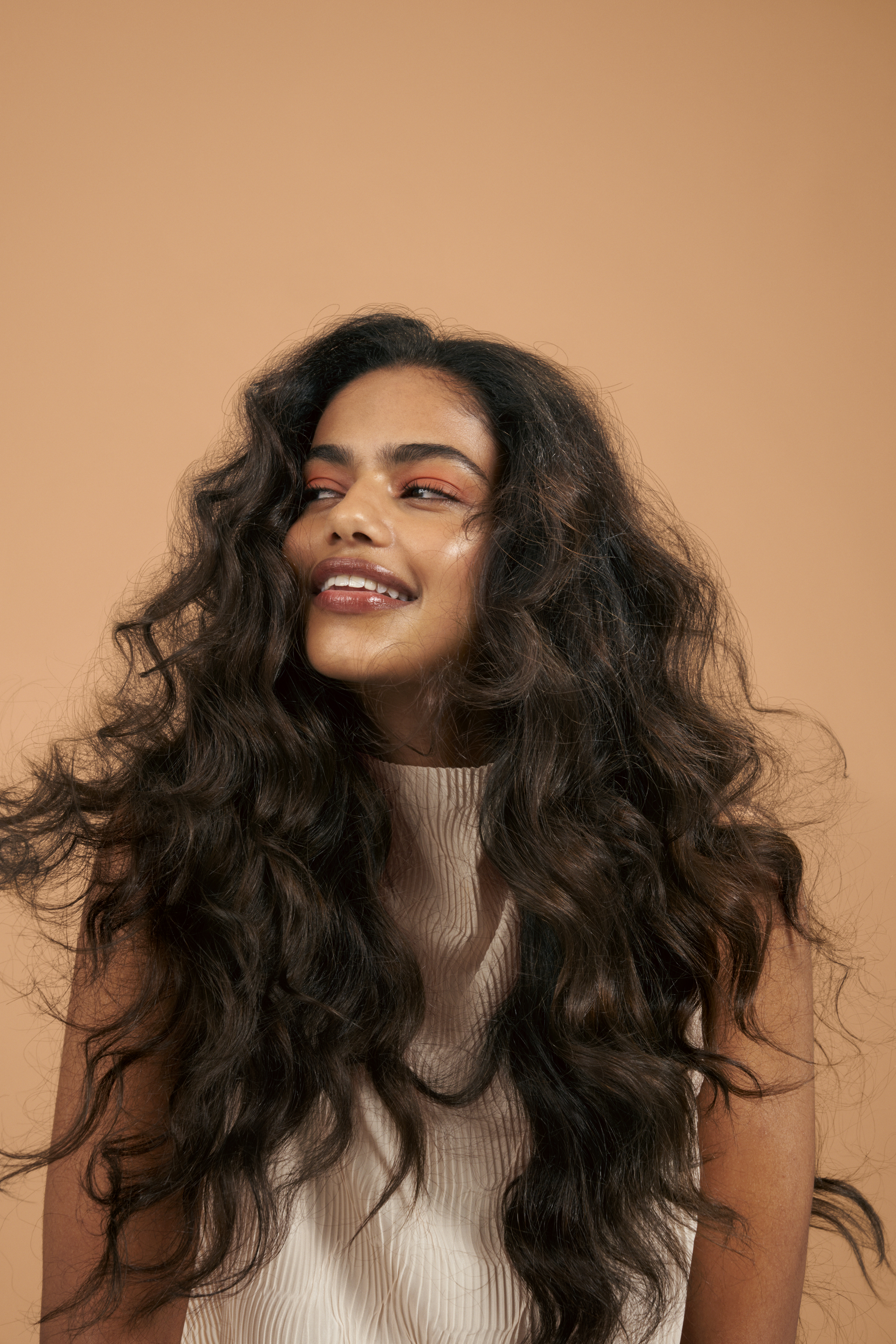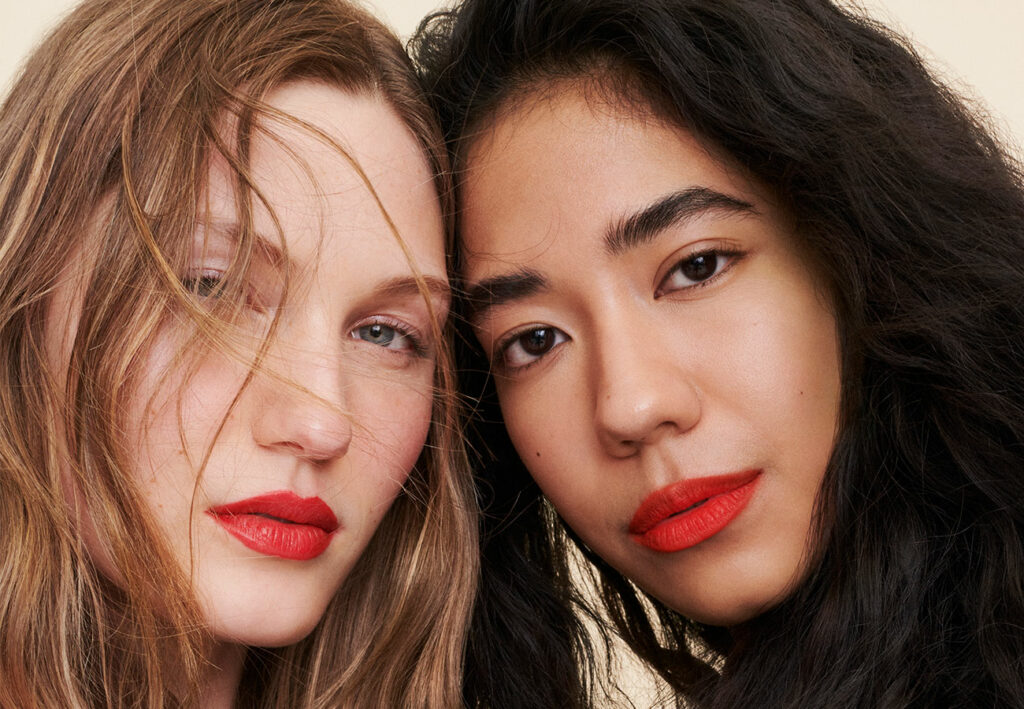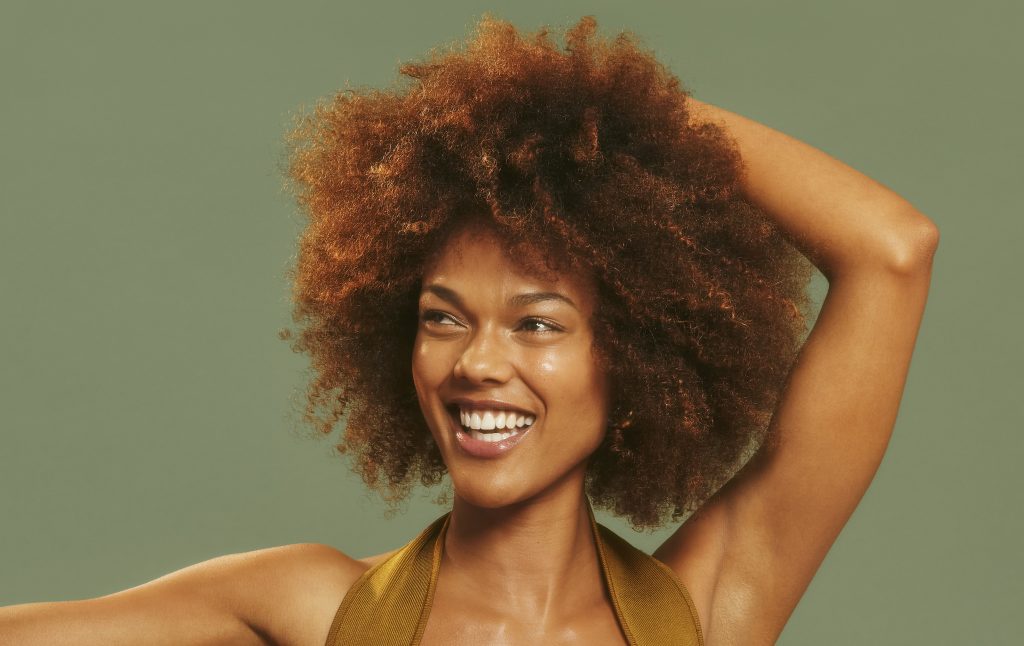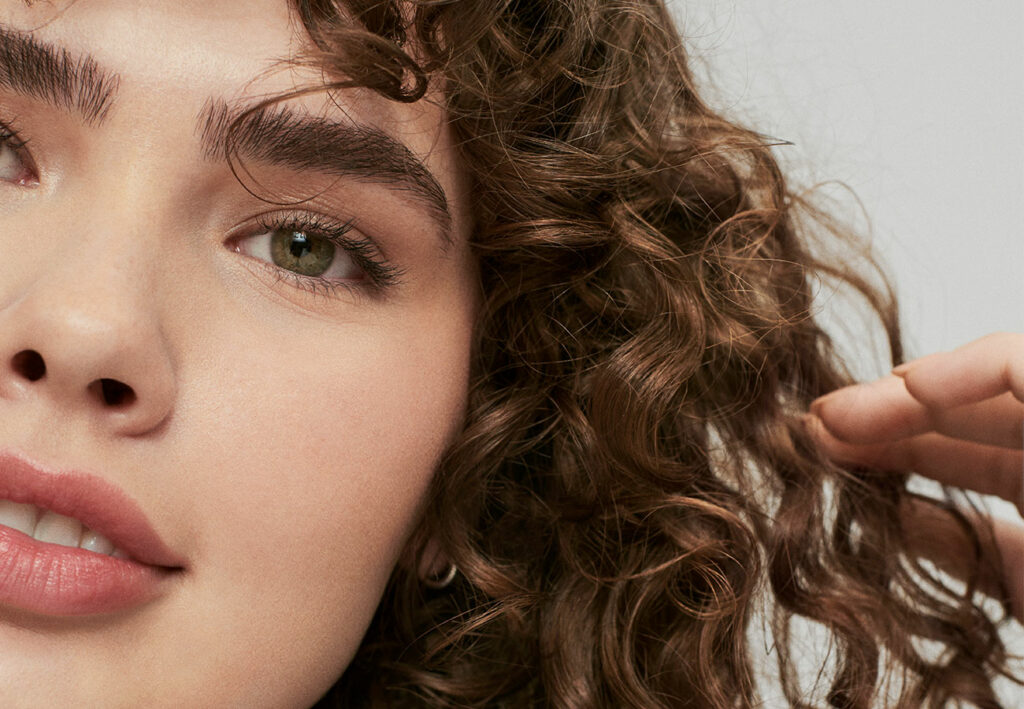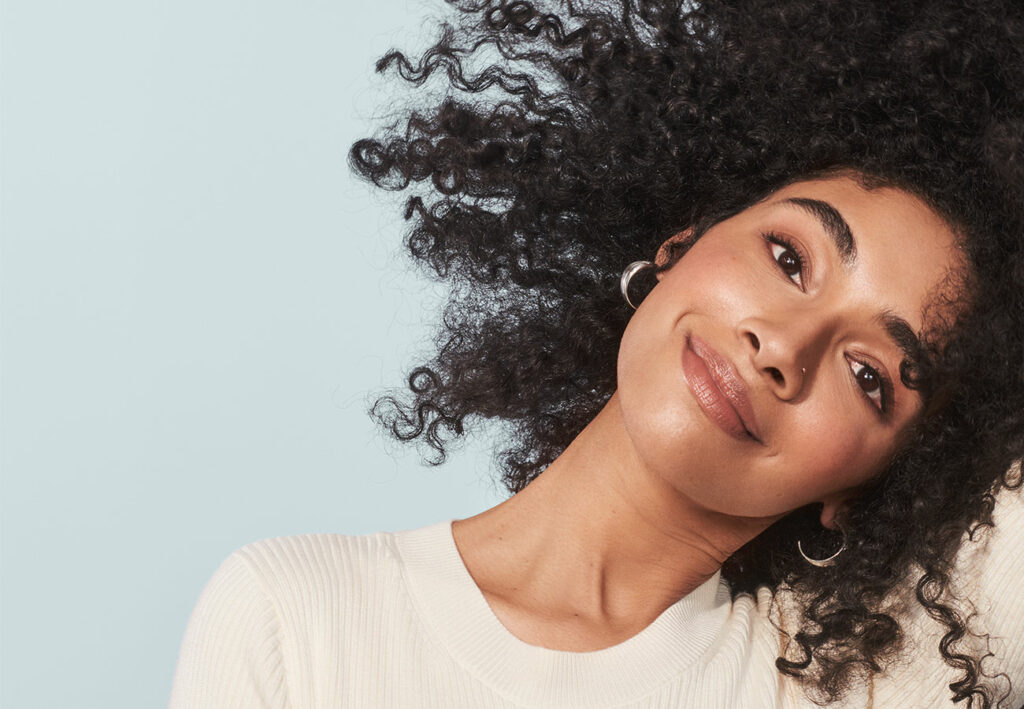Dry shampoo for fine hair
When do you use dry shampoo for fine hair? Those with fine strands are often prone to limp locks, which is why looking for a formula that can pump up the volume is key. Fine hair can get weighed down with grease and dirt, so that’s extra motivation to keep strands as close to squeaky clean as possible. Add bonus points for a dry shampoo that delivers texture as well, which can help fake fullness. “Get a dry shampoo that can add volume and lift without leaving residue and a powdery cast,” advises Huffnagle. “It’s best to apply dry shampoo in sections at the roots, allowing it to sit for approximately 60 seconds to fully absorb sebum before massaging to disperse the product.”
Dry shampoo for thick hair
Have a full head of hair? Your locks tend to be able to take on a lot more dry shampoo—but that doesn’t mean you should spray with reckless abandon. Just like fine-haired friends, it’s best to apply it in sections, according to Huffnagle. “Target oily spots such as the crown and hairline,” she says.
Dry shampoo for dry hair
Parched strands need a little more TLC from their dry shampoo. This includes all textures: fine, medium, thick and coarse. Since none of these textures are exempt from an oily scalp, it’s best to concentrate dry shampoo at the root and avoid spritzing it on ends for fullness. Look for formulas with hydrating ingredients that won’t leave your hair even more thirsty and avoid ingredients that are extra drying, like alcohol and preservatives. After all, dry hair equals dull hair. Instead of the traditional spray formula, a power tends to be much gentler on dry locks.
Dry shampoo for oily hair
In theory, all dry shampoos should sop up that grease that is ruining your blowout. But just like every other hair care product, some are just better than others at getting the job done. Look out for ingredients that can be too absorbent and irritate the scalp, like alcohol denat and sea salt. Another trick for keeping the oil slick look at bay is buying a dry shampoo with a matte finish.
Color treated hair dry shampoo
Anyone who invests their time and money into their hair wants to preserve that hue for as long as possible. Sure, you probably suds up with a color-safe shampoo and conditioner, but have you given that much thought to the rest of your hair products? Shop for a dry shampoo that’s marked as color safe to keep your color game strong.
Dry shampoo is so beneficial in a pinch for those in-between wash days. In search of an amazing shampoo/conditioner combo for when you actually do feel like washing your hair? Get started with your custom formula by taking the Prose consultation here.

